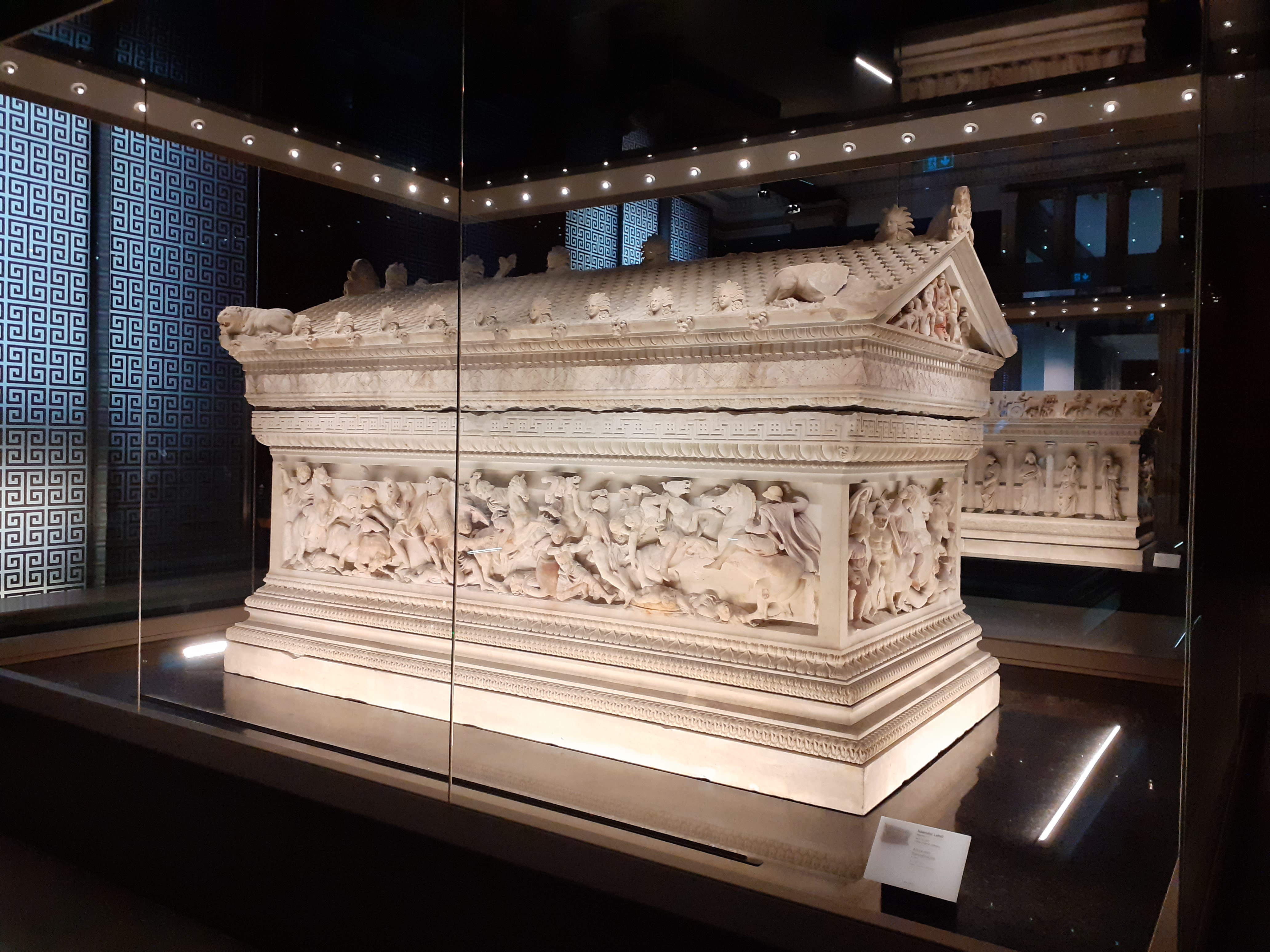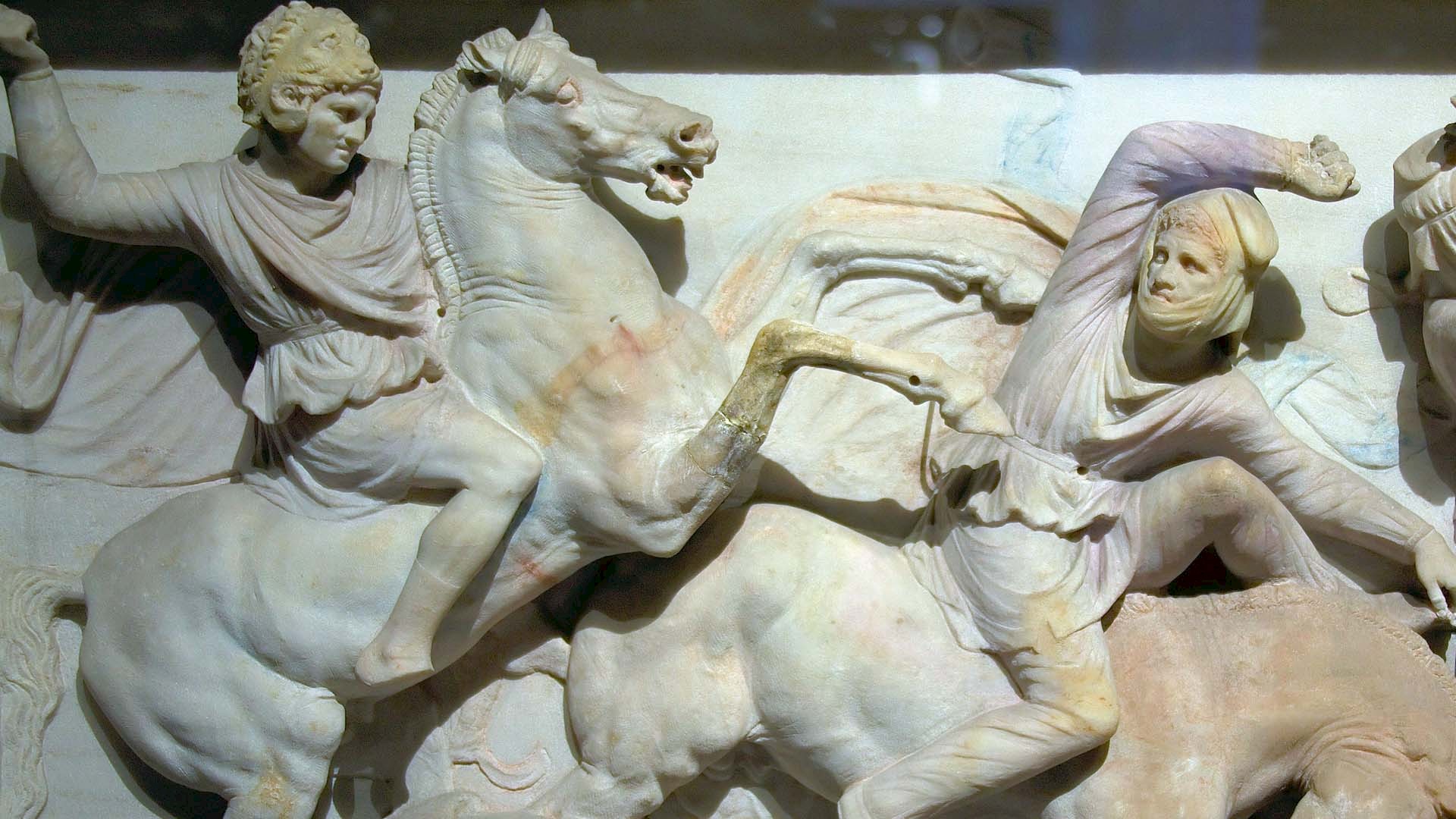 |
The Alexander Sarcophagus, c. 312 B.C.E., Pentelic marble and polychromy, found in Sidon, 195 x 318 x 167 cm (İstanbul Archaeological Museums)
The Alexander Sarcophagus was first discovered in the late nineteenth century in the royal necropolis (a city of dead kings and their families) in Sidon, Lebanon. It dates back to the late 4th century BC. It was made out of Pentelic marble, one of the highest quality marbles valued for its clarity, its strength, and its ability to care up very well. Historians originally thought that the Sarcophagus was made for Abdalonymus, King of Sidon, since it was found there, or maybe even Mazaeus, a Persian nobleman. It is indeed a spectacularly large, expensive and beautiful tomb. It is in the shape of the Greek temple. It is highly detailed before you look at the friezes. Friezes however carry two different stories.
 | The Alexander Sarcophagus, c. 312 B.C.E., Pentelic marble and polychromy, found in Sidon, 195 x 318 x 167 cm (İstanbul Archaeological Museums)
|
On one side, there is a battle scene. One stands out the most of all, the man on the horseback with lion skin on its head, Alexander the Great. He pretty much conquered half of the world. The lion skin symbolizes the mystic Greek hero Herakles, who wore the skin of the Nemcan Lion. Historians say that this battle was a symbolization of the Battle of Issus, the battle between Greeks and Persians, where Persians who had an advantage with the bigger army lost to Alexander the Great. Not displayed in the picture, however there is an image of the appointed king of Sidon, falling off his horse in the battle. The fact that both of them are displayed on the Sarcophagus displays that Alexander wanted to strengthen the bonds between two empires.
 | | The Alexander Sarcophagus, c. 312 B.C.E., Pentelic marble and polychromy, found in Sidon, 195 x 318 x 167 cm (İstanbul Archaeological Museums) |
|
On the other side is displayed a hunt. The center of the scene is a massive lion that is attacking the horse. There are also 2 nations displayed, Persians and Greeks, however they are working together rather than fighting each other.
"Alexander wanted to create the empire where the Greeks and his army, the Macedonians soldiers would intermarry with local women along the way to solidify the base of the empire."
The art historians have held up 5th century Athens as the top of artistic creation in the Greek world.
|
https://smarthistory.org/the-alexander-sarcophagus/
https://www.ancientworldmagazine.com/articles/the-alexander-sarcophagus/
https://www.thevintagenews.com/2017/12/23/alexander-sarcophagus/
It seems as though alexander was a powerful leader and wanted nothing but to conquer and valued teamwork. I wonder what his thoughts would be on his descendents now and how they live
ReplyDelete